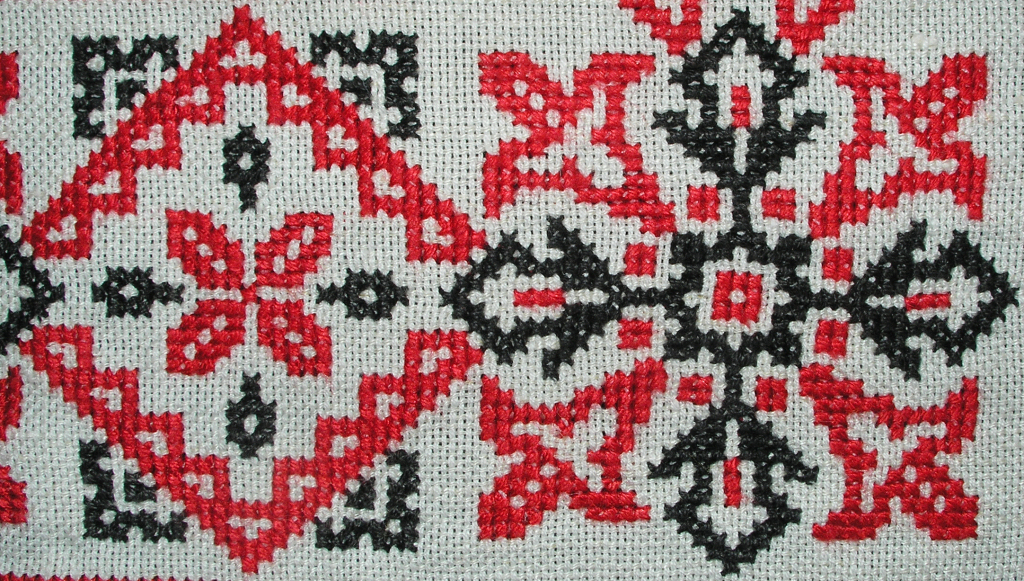The word embroidery is used to describe any kind of decorative needlework on fabric, that involves threads and needle. The term encompasses many different types of needlework like applique, cut-work, free stitching, cross-stitch etc.
The term free embroidery (or free-hand embroidery) describes the style of needlework that involves applying several decorative stitches to fabric without using the fabric's weave as a guide. The typical process is the following: At first, the stitcher draws the pattern on the fabric using pencil, carbon paper, erasable marker etc and then he/she stitches the pattern with threads and needle. The length of each stitch might be slightly different since the stitcher relies on his/her experienced eye. Suitable fabrics for free-hand embroidery are cotton, linen, silk and others.
The term free embroidery (or free-hand embroidery) describes the style of needlework that involves applying several decorative stitches to fabric without using the fabric's weave as a guide. The typical process is the following: At first, the stitcher draws the pattern on the fabric using pencil, carbon paper, erasable marker etc and then he/she stitches the pattern with threads and needle. The length of each stitch might be slightly different since the stitcher relies on his/her experienced eye. Suitable fabrics for free-hand embroidery are cotton, linen, silk and others.
| Free embroidery or plain embroidery |
The term needlepoint describes the stitching work on an evenweave fabric, such as mesh canvas, or aida, using the weave of the fabric as a guide for the placement of the stitches. The are two typical processes.
Process A: The design comes pre-stamped on the canvas and the stitcher fills the areas of the design using the appropriate color threads. This type of needlework is considered generally easy and relaxed.
Process B: The design is worked from a paper chart. The stitcher counts the stitches marked on the chart to determine where they belong on the fabric. Each box on the paper chart is a stitch on the canvas. This type of stitching requires great concentration in order the stitcher not to loose counting
 |
| Bargello needlepoint. |
Needlepoint was probably invented to re-create the look of woven tapestries. One of the most popular types of needlepoint is definitely cross-stitch. Cross stitch is a type of needlepoint in which stitches are X shaped. Unlike needlepoint, which typically requires that the canvas be entirely covered with stitching, cross stitch leaves areas of the background unstitched.
 |
| Traditional cross-stitch from Hungary Image source: "Cross stitch detail" by Paula Kate Marmor - Own work by the original uploader. Licensed under CC BY-SA 3.0 via Wikimedia Commons - |


No comments:
Post a Comment